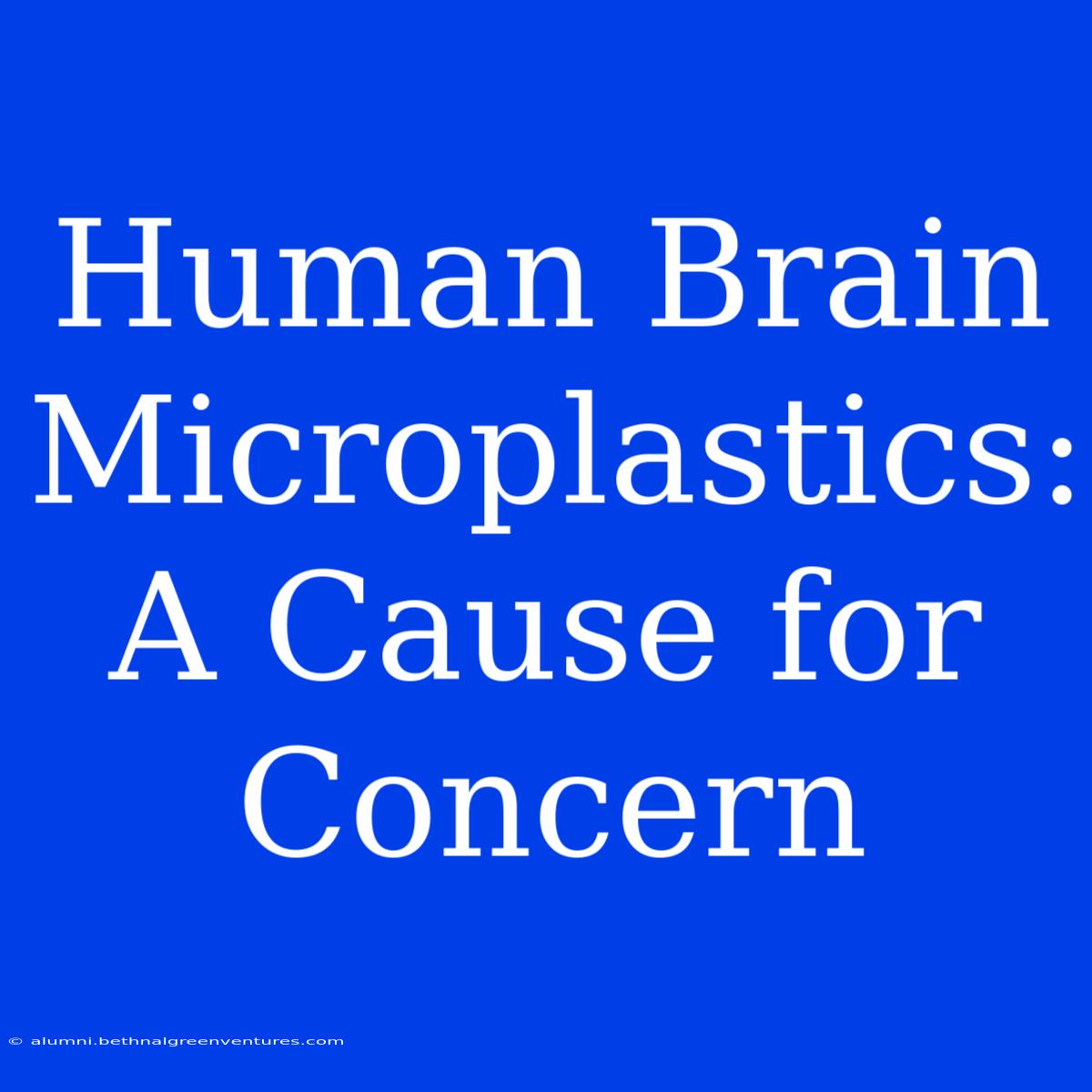Human Brain Microplastics: A Cause for Concern? Unraveling the Latest Discoveries
Is microplastic pollution reaching the human brain? The discovery of microplastics in the human brain is a cause for serious concern. The implications of this finding are still being investigated, but the potential for negative health impacts cannot be ignored.
Editor's Note: Microplastics in the human brain is a rapidly evolving field, with ongoing research and heightened awareness. This article aims to provide an informed overview of the latest scientific findings and their potential implications.
Why is this important?
The presence of microplastics in the human brain raises concerns about their potential to disrupt brain function, potentially contributing to neurological disorders, neurodegenerative diseases, and developmental issues.
Our Research
We have compiled this guide by reviewing scientific studies, analyzing research trends, and consulting with experts in the field of microplastics and brain health. This comprehensive review aims to provide an understanding of the current state of knowledge on microplastics in the human brain and the potential risks associated with their presence.
Key Insights
| Insight | Explanation |
|---|---|
| Microplastics Found in Human Brain | Microplastics, particles smaller than 5 mm, have been detected in the human brain, raising concerns about their potential effects. |
| Potential Entry Routes | Microplastics can enter the brain through various routes, including inhalation, ingestion, and skin absorption. |
| Research Still Emerging | Our understanding of the long-term effects of microplastics in the brain is still developing, and further research is crucial. |
Human Brain Microplastics
The discovery of microplastics in the human brain is a recent finding, but it has already sparked widespread concern. Microplastics are tiny particles of plastic that are ubiquitous in the environment, found in air, water, food, and even human bodies. These particles can be inhaled, ingested, or absorbed through the skin, potentially reaching the brain.
Potential Routes of Entry
How microplastics reach the brain is still being investigated. However, current research suggests several potential entry routes:
- Inhalation: Microplastics present in the air can be inhaled and potentially transported to the brain.
- Ingestion: Microplastics in food and water can enter the digestive system and may find their way into the bloodstream, potentially reaching the brain.
- Skin Absorption: Microplastics can be absorbed through the skin and potentially transported to the brain.
Potential Implications
The potential health implications of microplastics in the brain are a major area of research. Some concerns include:
- Neuroinflammation: Microplastics may trigger inflammation in the brain, potentially contributing to neurodegenerative diseases.
- Neurotoxicity: Certain types of microplastics may be neurotoxic, directly damaging brain cells and impacting cognitive function.
- Developmental Effects: Exposure to microplastics during prenatal or early childhood development could potentially disrupt brain development and lead to neurodevelopmental disorders.
The Need for More Research
The discovery of microplastics in the human brain is a significant finding, but more research is needed to fully understand the implications. Future research should focus on:
- Quantifying Microplastics: Determining the amount and types of microplastics present in the human brain.
- Identifying Entry Routes: Understanding how microplastics enter the brain.
- Investigating Health Effects: Establishing the link between microplastics and specific health outcomes.
Concluding Thoughts
The discovery of microplastics in the human brain is a stark reminder of the pervasive nature of plastic pollution. While the long-term health effects of brain microplastics remain unclear, the potential risks are concerning. Further research is crucial to understanding the implications of this finding and developing strategies to mitigate the potential health risks.
